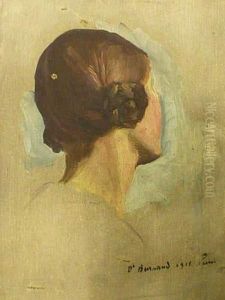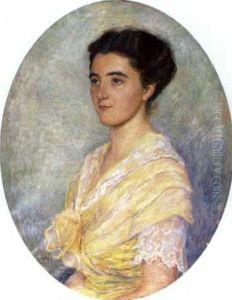Daniel Burnand Paintings
Daniel Burnand was a Swiss portrait painter and draughtsman. Born on May 18, 1749, in Payerne, Switzerland, Burnand is primarily known for his portrait work, which has been recognized for its clarity and attention to detail. He was active during a period that saw the transition from Rococo to Neoclassicism in European art.
Daniel Burnand's early years were spent in Payerne, but he later moved to Geneva, which was a significant cultural center in Switzerland during the 18th century. There he became part of the thriving artistic community. He received his training from local Swiss artists, who were influenced by French artistic styles due to the close cultural ties between Switzerland and France at the time. Despite the lack of information about his mentors or specific training, Burnand's work suggests that he had a strong foundation in the techniques of portrait painting.
Throughout his career, Burnand developed a reputation for his portraits, which often depicted members of the bourgeoisie, local dignitaries, and the nobility. His style was characterized by a precise realism and a subtle use of light and shadow, which helped to create a sense of volume and depth in his portraits. He captured the individual character of his sitters with a keen eye, earning him commissions and recognition among his contemporaries.
Daniel Burnand's contributions to Swiss art were not limited to his own creations. He also played a role in the cultural life of Geneva by participating in the city's intellectual circles. His portraits serve as a historical record of the faces of his time and provide insight into the fashion and societal norms of the late 18th and early 19th centuries.
Burnand lived through a tumultuous period that included the French Revolution and the Napoleonic Wars, events that inevitably influenced the cultural and political landscape of Geneva and Switzerland as a whole. Despite these upheavals, he continued to work and contribute to the artistic heritage of his country.
He passed away on April 4, 1838, in Geneva, Switzerland. Although not as widely known as some of his European contemporaries, Daniel Burnand's work remains a significant part of Swiss art history, offering a window into the society and culture of his time. His portraits are preserved in various collections, serving as lasting testaments to his skill as a portraitist.

